Ready to embark on our next culinary tour? Join us as we discover 7 legendary Rajasthani non-veg dishes that you must enjoy on your next trip to the desert state.
Rajasthan is the land of desert caravans, marvellous palaces, strong fortresses and is home to tribes of strong, resilient people. From the homes of the wandering nomads to the palaces of the Rajput Rulers, the culture of Rajasthan is replete with a vibrancy that more than makes up for the barrenness of the surrounding desert.
The rich spice of life can be found aplenty in the dress, songs and the food of this regal culture. Red chillies and meat have played an essential part in the cuisine of this desert kingdom, sustaining the warrior tribes in the days of old.
So, let us whisk away to the desert sands and discover 7 legendary Rajasthani non-veg dishes that you must try the next time you visit Rajasthan.
Before we begin, make sure you’re following us on Instagram @ My Yellow Plate
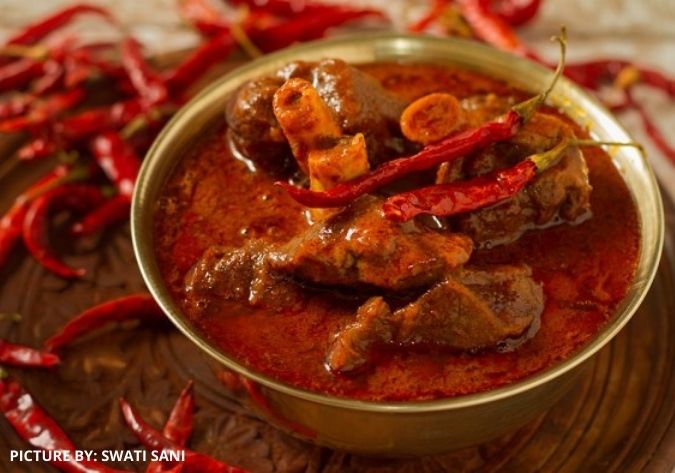
1. Laal Maas
A fiery mutton dish made with red chillies, garlic and pepper, this signature Rajasthani mutton dish is definitely not for the faint-hearted. However, all chilli and mutton lovers will love this red, gravy dish that packs a punch of flavour along with tender pieces of red meat. The dried red chillies used in the dish are a staple ingredient in most Rajasthani dishes. It is said that the hot spice causes the desert-dwellers to sweat more and cool their bodies naturally and is just another example of how this culture has been shaped by the intense heat and sparse gifts of the desert. Laal Maas tastes best when eaten with aromatic basmati rice or bajra rotis. Don’t just take our word for it, try it yourself on your next trip to Rajasthan. The best versions of this dish can be found in Jaipur, Udaipur and of course Jodhpur.
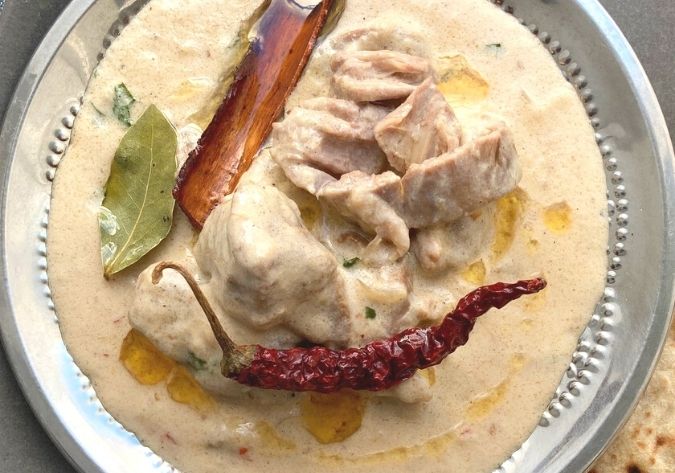
2. Safed Maas
If spicy is not to your taste, then don’t lose heart as the next dish on our list promises to be quite mild yet delicious. If Laal Maas is all about fire, then its lighter counterpart, Safed Maas is all about flavour. This rich Rajwada dish is considered to be one of the best Rajasthani non-veg dishes and offers melt-in-your-mouth pieces of mutton that rest amidst a rich white gravy of curd, milk, cream and cashew paste along with mild spices and even dry fruits. Wonderfully refreshing and creamy, this white mutton dish is a must-try for those who love a well-blended dish of subtle flavours. The dish is particularly sublime with fresh, hot rotis and some pickled onions. If you are looking for an interesting mix between Laal Maas and Safed Maas, the go for Mohan Maas, a rich Rajwada dish that combines the rich, white gravy of Safed Maas with the fierce spiciness of Laal Maas. Once again, the best cities to enjoy this dish are Jodhpur, Jaipur and Udaipur.
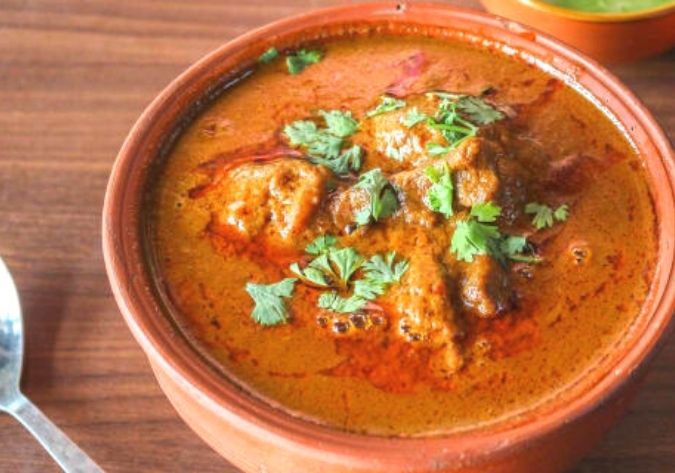
3. Junglee Maas
An authentic 100-year-old recipe that you will not find outside the state, Jungli Maas has enjoyed a royal tradition in the history of this land. The recipe was invented out of necessity: whenever the kings and their entourage went out hunting, the day’s catch had to be prepared immediately to prevent spoilage and they could not carry a lot of ingredients. The meat whether tame mutton or fresh wild boar was rubbed with salt and cooked with whole chillies and ghee. While over the course of time, more ingredients have been added, this old-time camping meal made with minimal spices retains its simplicity and will leave you wanting more. Make sure you try this royal dish on your next trip to Jaipur.
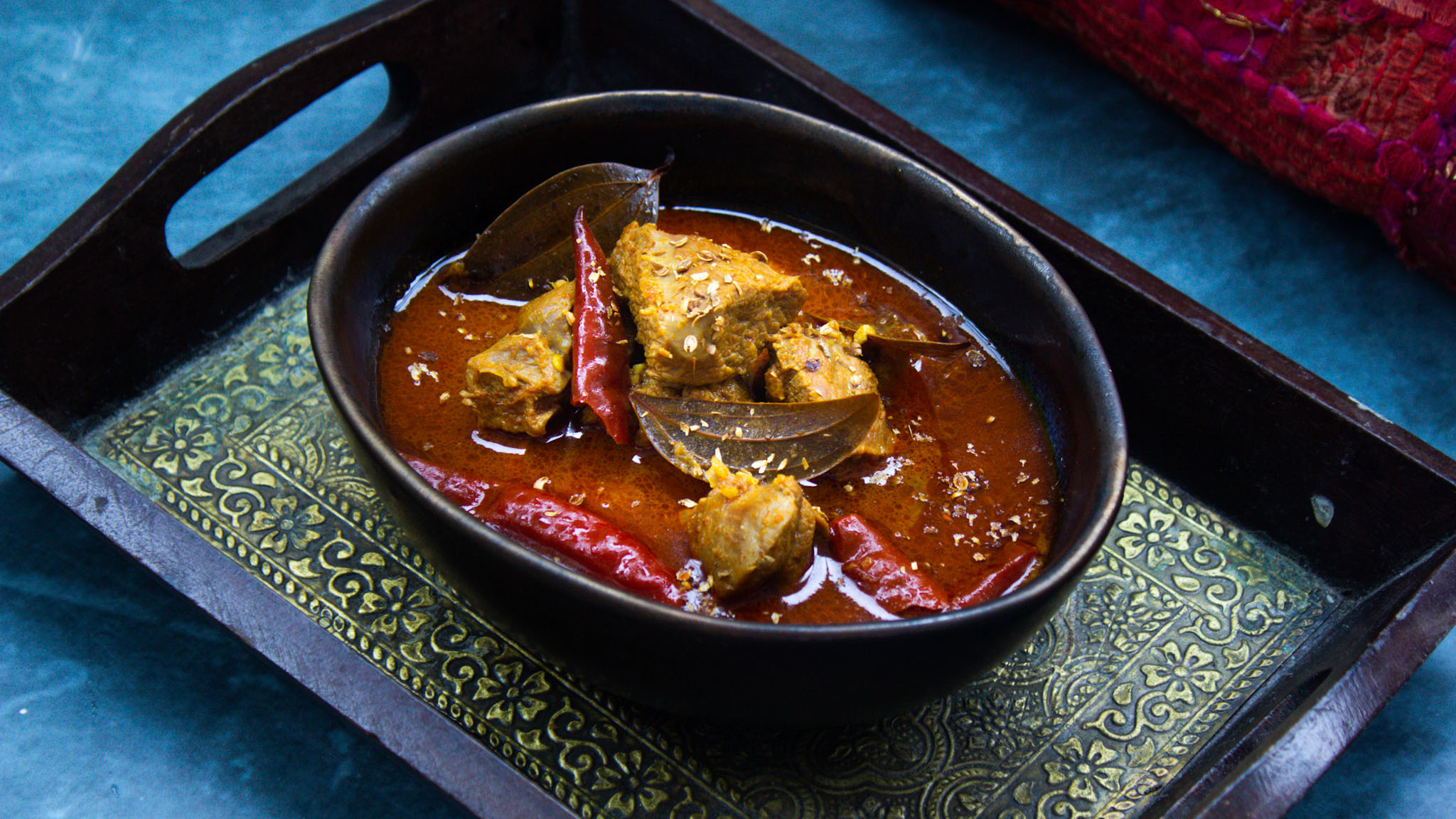
4. Banjara Gosht
Rajasthani Mutton Banjara or Banjara Gosht is another local recipe that is sure to leave your taste buds satisfied and yet wanting more. Made with yoghurt and a custom mix of Rajasthani spices, the dish offers you well-seasoned and fall-off-the-bones pieces of tender mutton. The dish comes from the Banjara people of Rajasthan, a nomadic tribe that traverses the landscape of this arid desert. In the old days, they were mainly salt and cattle merchants and cooked this dish whenever and wherever they made their camp for a while. The dish is made with local ingredients including chillies that are easily available to the desert tribe. The result is a salt-of-the-earth-dish with well-cooked mutton pieces swimming in a simple yet rich gravy. Are you drooling yet? Don’t worry if you are not, there is more to come.
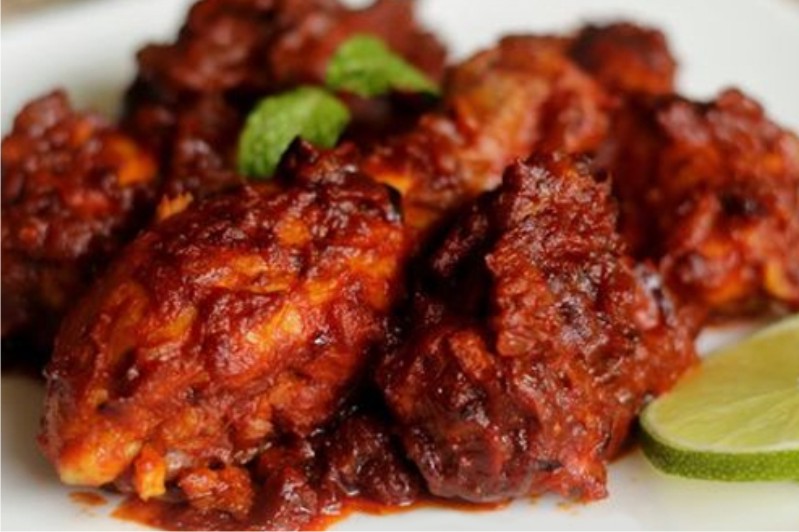
5. Bhuna Kukda
A well-loved chicken dish in Rajasthan, Bhuna Kukda, as the name suggests is a chicken dish cooked with onion, spices, yoghurt and yes, you’re right, a load of red chillies. While the dish may seem similar to the chicken dishes found in North India, its the unique combination of local spices that make this dish rank high among the best Rajasthani non-veg dishes. The semi-dry dish offers you succulent pieces of well-cooked chicken and contains earthy flavours that are best enjoyed with bajra or wheat rotis.
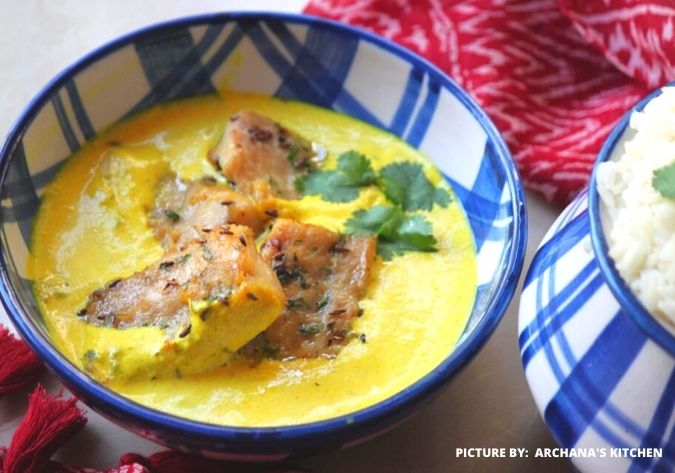
6. Machhli Jaisamandi
A unique way of preparing fish can be seen in the Machhli Jaisamandi, a rare Rajasthani specialty that you must try the next time you visit the desert state. Tender pieces of fish are marinated in a special green chutney and then deep-fried. The fried pieces are further cooked in a gravy of ginger, garlic, freshly chopped coriander and mint leaves. The dish offers some cool, refreshing relief against the desert heat and is best enjoyed with a plate of hot, steaming rice. Make sure to try this dish when you visit Udaipur.
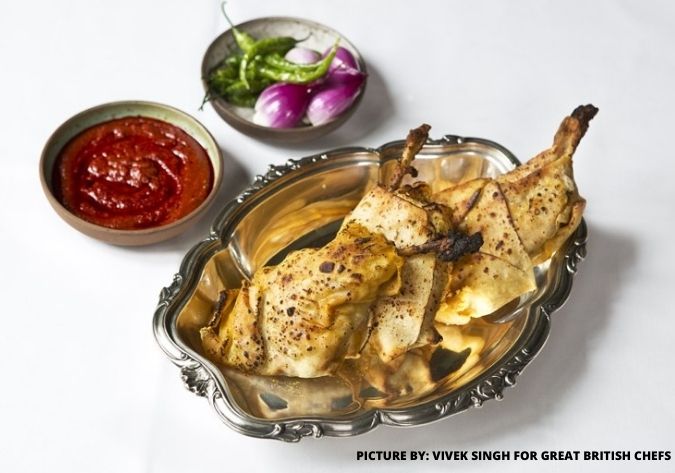
7. Khad Khargosh
Another novelty dish that you must try in Rajasthan is Khad Khargosh or rabbit curry. This recipe is another treasure from the hunting days of Rajput kings. The rabbit is seasoned, rubbed with garlic and red chilli chutney. It is then wrapped in leaves and cooked in the freshly-dug underground pits. The resultant meat is tender, smoky and delicious. While rare to find in restaurants, this dish is still cooked around Jaipur and in some cases, the rabbit is replaced with a chicken. Do try this dish if you can with traditional Indian flatbreads.
Which of the above Rajasthani Non-Veg dishes would you like to try on your next visit to Rajasthan? Stay with us as we bring you more delicious tales of Rajasthani culinary history. Do let me know on Instagram @ My Yellow Plate



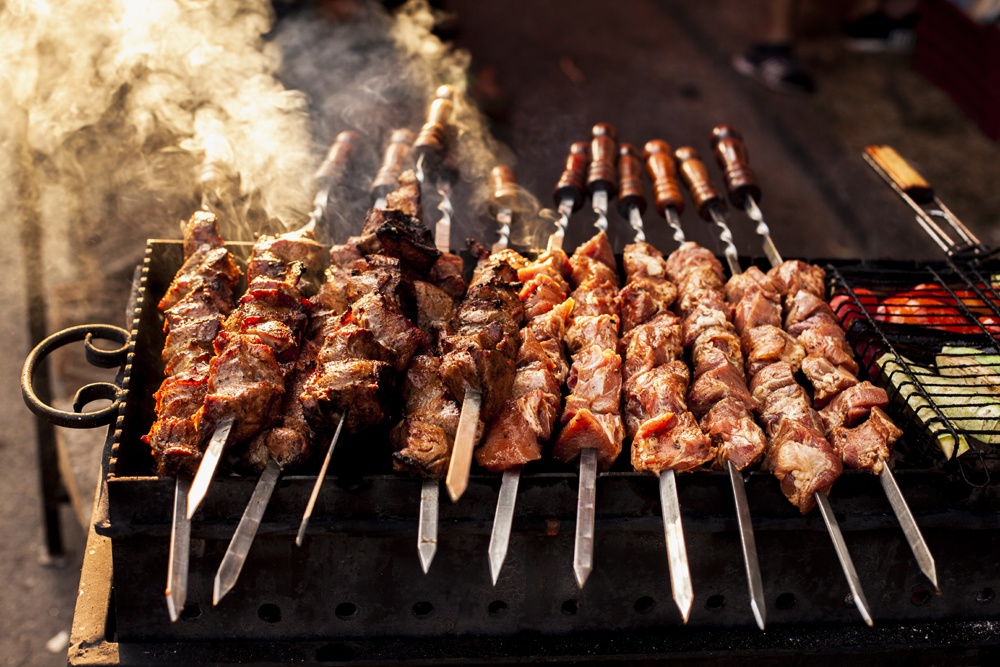
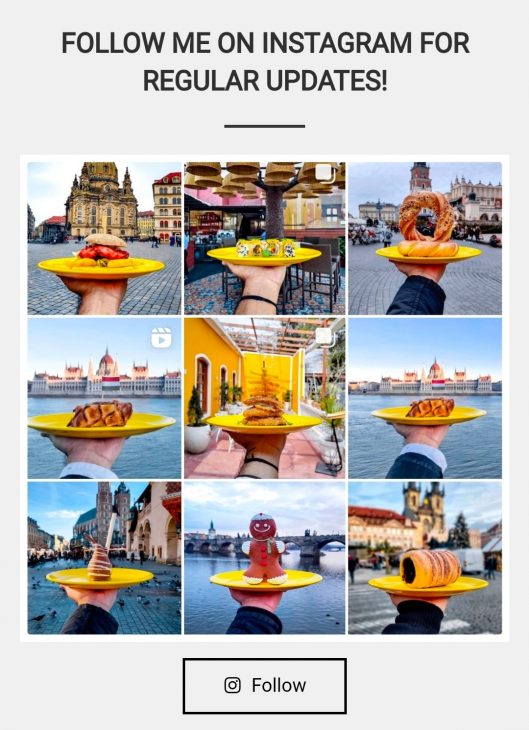



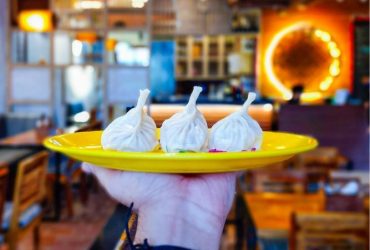

Leave a Reply